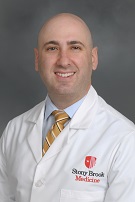What to Know About a No-Scalpel Vasectomy
- A vasectomy is a procedure in which a surgical disconnection of the vas deferens (the tube that allows the sperm to leave each testicle) is performed.
- No-needle, no-scalpel vasectomy uses a small puncture hole to divide the vas deferens with no sutures or stitches needed to close the skin.
- The no-scalpel vasectomy has also been shown to be faster, have less complications, and have a faster recovery time than the traditional vasectomy.
- A patient undergoing a vasectomy should understand it is considered permanent contraception. Vasectomy reversal may be possible but is not a guarantee.
Before, During and After a No-Scalpel Vasectomy
Prior to scheduling the procedure, a consultation will take place and include:
- Explanation of the procedure as well as preoperative and postoperative instructions.
- History and detailed physical exam.
- Explanation of possible risks, failure, and complications.
- Answering any patient questions or concerns.
- Signing a written consent by both the patient and his partner.
- Scheduling the procedure
During the Procedure
- Most men choose to have the procedure performed in the office, but it can also be performed in the operating room with general anesthesia.
- When it is performed in the office it is done with local anesthesia. This can be given with no needle or a very small needle technique.
- After the injection of local anesthesia, there is minimal discomfort during the procedure.
- The procedure takes about 20 to 30 minutes.
Recovery
- Patients relax on the couch for about two days, trying to minimize movement.
- Testicles can be swollen for two or three days.
- Four days after the procedure, most men can resume normal activity and may resume physical activity and sex seven to 10 days after the procedure.
- Check semen analysis 12 weeks after the vasectomy to ensure success.
Though rare, possible complications include:
- Bleeding/scrotal hematoma – the most common early complication. Risk is about 1%.
- Infection – extremely rare, often related to hematoma.
- Temporary pain – Most pain resolves in seven days. If pain persists, most pain resolves in six to 12 weeks.
- Chronic pain – very rare, occurs one in every 10,000 vasectomies.
- Sperm granuloma – found in up to 60% of men after vasectomy. It is a hard ball that forms on the cut edge of the vas deferens from sperm leakage. It is not dangerous.
- Testicular atrophy – extremely rare. It may happen in men with prior testicular surgery.
- Vasectomy failure – vasectomy success is not 100%, failure with recanalization occurs in about one in 2,000 men.
Frequently Asked Questions
Does a vasectomy change orgasm, ejaculation, or erections?
No, a man’s libido is the same, if not higher after a vasectomy. There may be a five to 10 percent decrease in ejaculate volume.
Does a vasectomy increase the chance of getting prostate cancer?
No. It has been studied, and there is no connection between vasectomy and prostate cancer.
Why Stony Brook Urology?
Stony Brook Urology is the only Men’s Health practice in Suffolk County with fellowship-trained physicians providing comprehensive care for male fertility, erectile dysfunction, and low testosterone. As an academic medical center, our patients also have access to the latest treatments, technology, and clinical trials.
Our Vasectomy Specialists
 |
 |
| William Berg, MD | Yefim R. Sheynkin, MD, FACS |
To make an appointment, please call 631-444-6270

